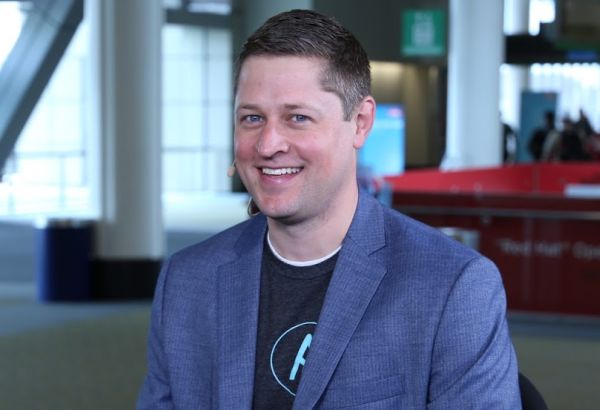 EMERGING TECH
EMERGING TECH
 EMERGING TECH
EMERGING TECH
 EMERGING TECH
EMERGING TECH
Networking is often considered the second-class citizen of the computing world. So long as it works, no one at the top really cares how. Network administrators, for their part, are very conservative about making changes to networks. These factors all slow innovation in the networking field. Still, innovation is happening, and companies are opening up to the possibilities networking offers.
“As everything started on the compute side, the networking side has come along for the ride,” said Andrius Benokraitis (pictured), principal product manager of networking at Ansible by Red Hat Inc. Yet, networking isn’t the end. Network engineers have to consider switching, routing, load balancing and other things needed in the data center, he explained.
Benokraitis spoke to Stu Miniman (@stu) and Rebecca Knight (@knightrm), co-hosts of theCUBE, SiliconANGLE’s mobile live-streaming studio, during the Red Hat Summit in Boston, Massachusetts.
(* Disclosure below.)
He discussed recent changes in the networking landscape, the importance of agility and the necessity of company buy-in.
As computing transformed, many compute people found they suddenly had to run networks to connect these new systems. They turned to familiar tools such as Ansible, an IT automation technology, to help them manage these networks, Benokraitis explained. This was possible because working with open-source software gave them the expertise to adjust to the networking environment.
Customers are mostly trying to extend what they have, according to Benokraitis. These companies have all the tools they need, but all want to do things better. Cutting down the time it takes to deal with networking task is one way they can improve. Using Ansible as a common framework, compute and networking people can work together to get things done and be agile, he stated.
Still, the biggest issue in the networking space is buy-in. The folks at the top have to buy in to the automation framework, and everyone has to understand how it fits into the plan. Without that, the automation will disappear into the background and no one will know about it, Benokraitis explained. The company must know how it’s using these tools to get to where it wants to be.
Watch the complete video interview below, and be sure to check out more of SiliconANGLE’s and theCUBE’s independent editorial coverage of Red Hat Summit 2017. (* Disclosure: Red Hat Inc. sponsors some Red Hat Summit segments on SiliconANGLE Media’s theCUBE. Neither Red Hat nor other sponsors have editorial control over content on theCUBE or SiliconANGLE.)
Support our mission to keep content open and free by engaging with theCUBE community. Join theCUBE’s Alumni Trust Network, where technology leaders connect, share intelligence and create opportunities.
Founded by tech visionaries John Furrier and Dave Vellante, SiliconANGLE Media has built a dynamic ecosystem of industry-leading digital media brands that reach 15+ million elite tech professionals. Our new proprietary theCUBE AI Video Cloud is breaking ground in audience interaction, leveraging theCUBEai.com neural network to help technology companies make data-driven decisions and stay at the forefront of industry conversations.